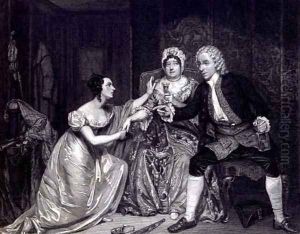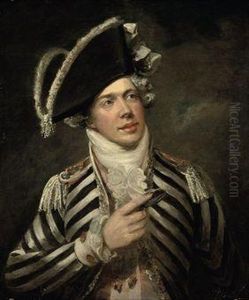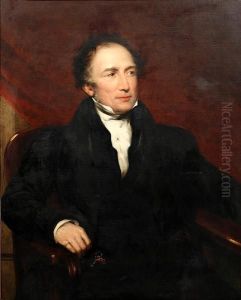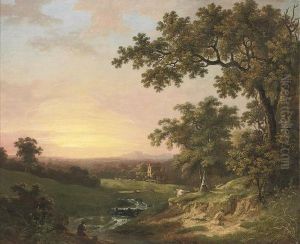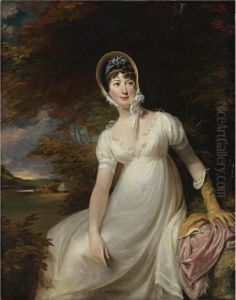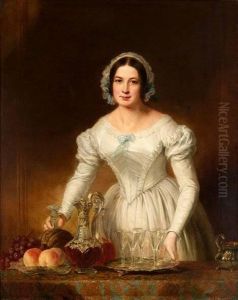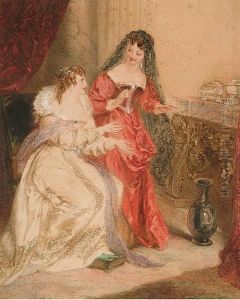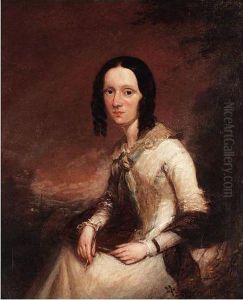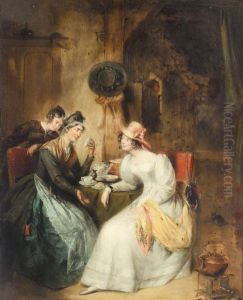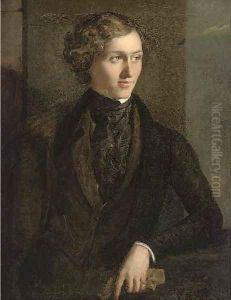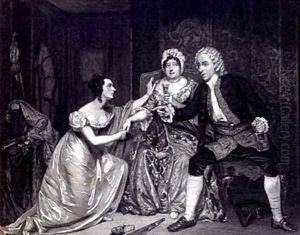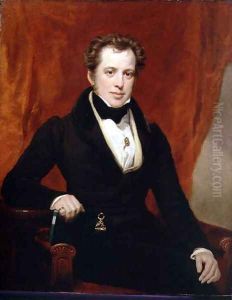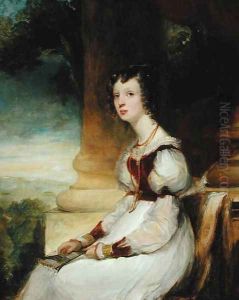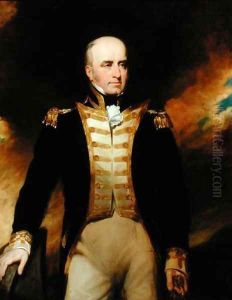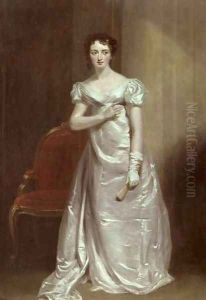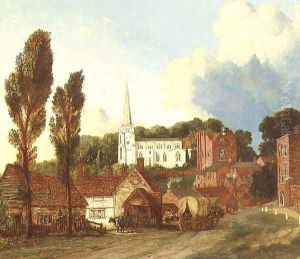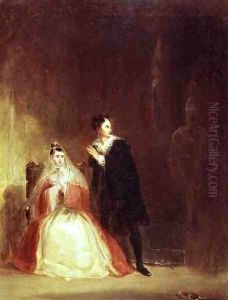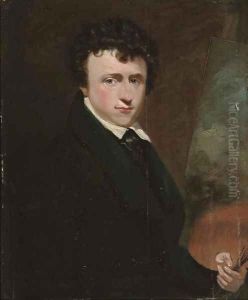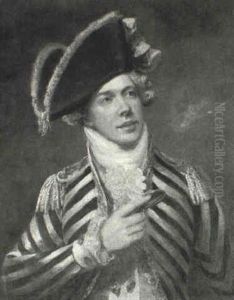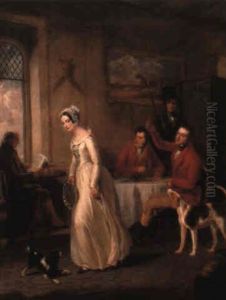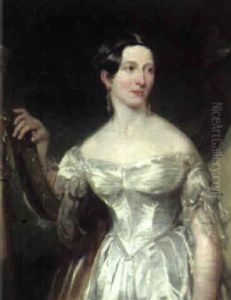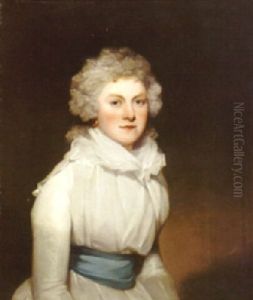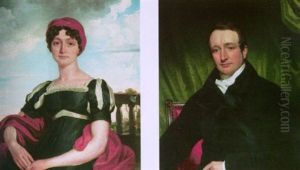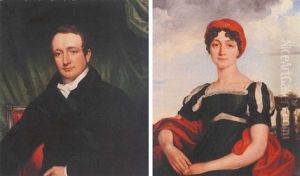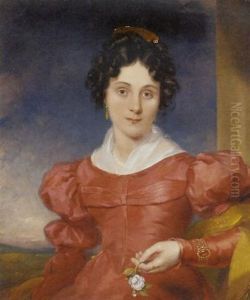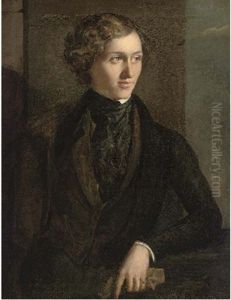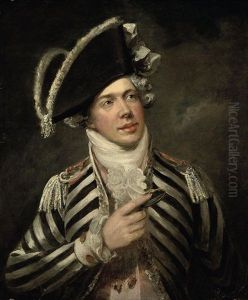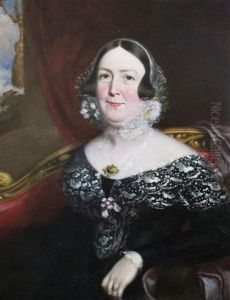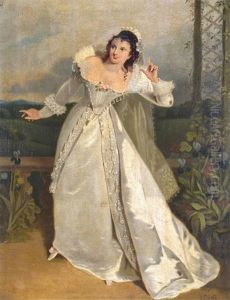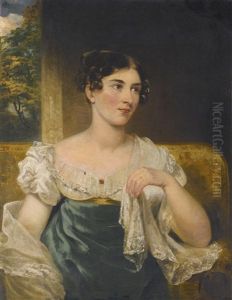George Clint Paintings
George Clint was an English portrait painter and engraver, born in 1770 in Brownlow Street, Drury Lane, London. He was largely self-taught, having only a rudimentary formal education. Clint began his career as an apprentice to a fishmonger but eventually abandoned this trade to pursue art, teaching himself to paint by copying prints and studying under renowned artists of the time.
Initially, Clint worked as a miniature painter and later transitioned to painting portraits and dramatic scenes. He was greatly influenced by the works of George Morland, an artist known for his scenes of English rural life, and William Hogarth, famous for his richly detailed and satirical pictorial narratives.
In the early 1800s, Clint began to gain recognition for his talents. He became an associate of the Royal Academy in 1821 and a full member in 1831. Throughout his career, he painted many notable figures of his era, including actors, politicians, and other prominent personalities. In addition to his portrait work, Clint is remembered for his engravings and theatrical scene paintings which capture the essence of English stage productions of the time.
Clint also had an interest in the St. Luke's School in London, which was dedicated to the education of artists' children. He was instrumental in the school's development and served as the school's president for a period.
George Clint lived a long and productive life, continuing to paint and engrave until his death in 1854. He left behind a rich legacy of work that offers insight into the cultural and social fabric of Regency and Victorian England. His works continue to be appreciated for their historical value and artistic merit.
